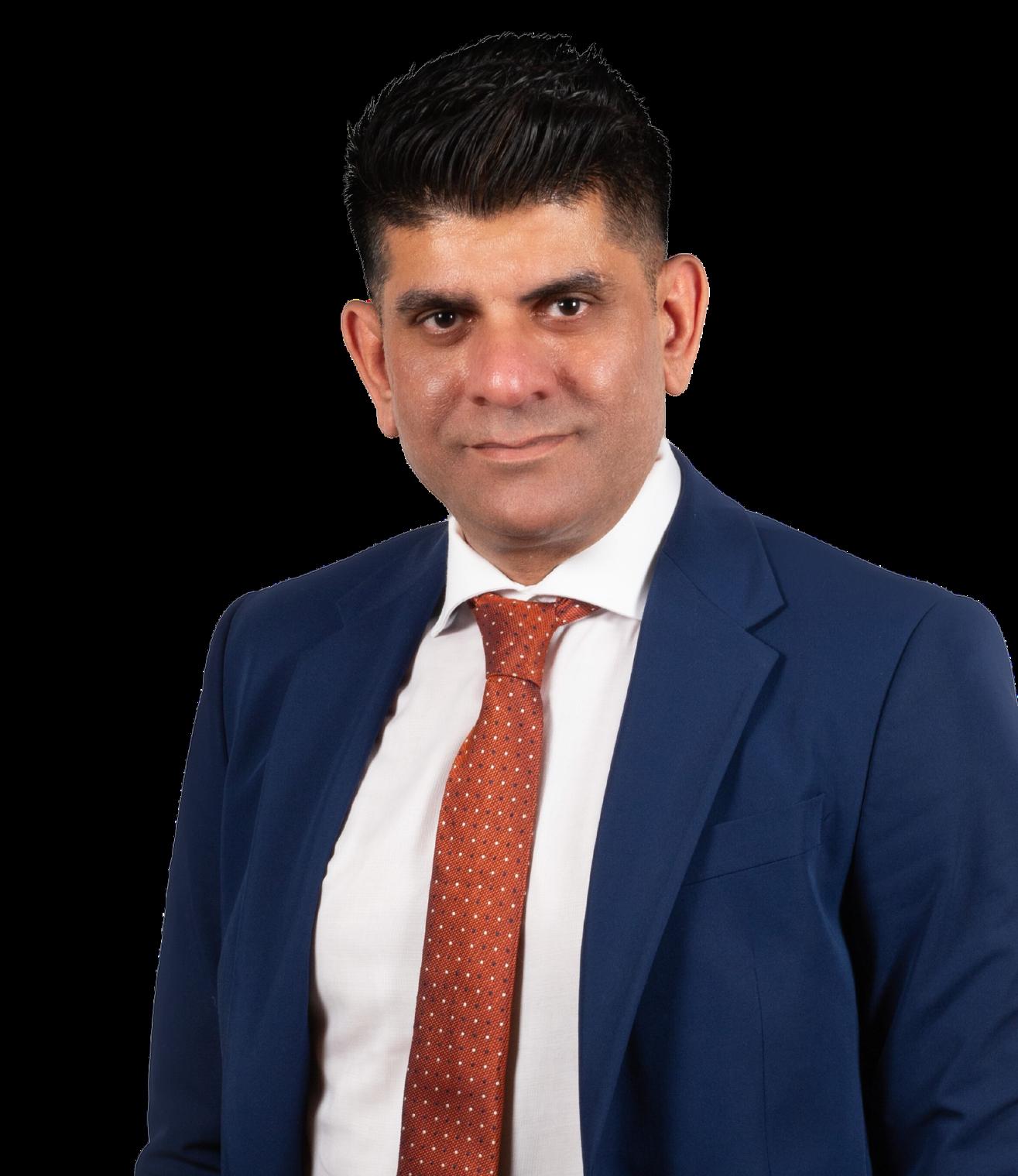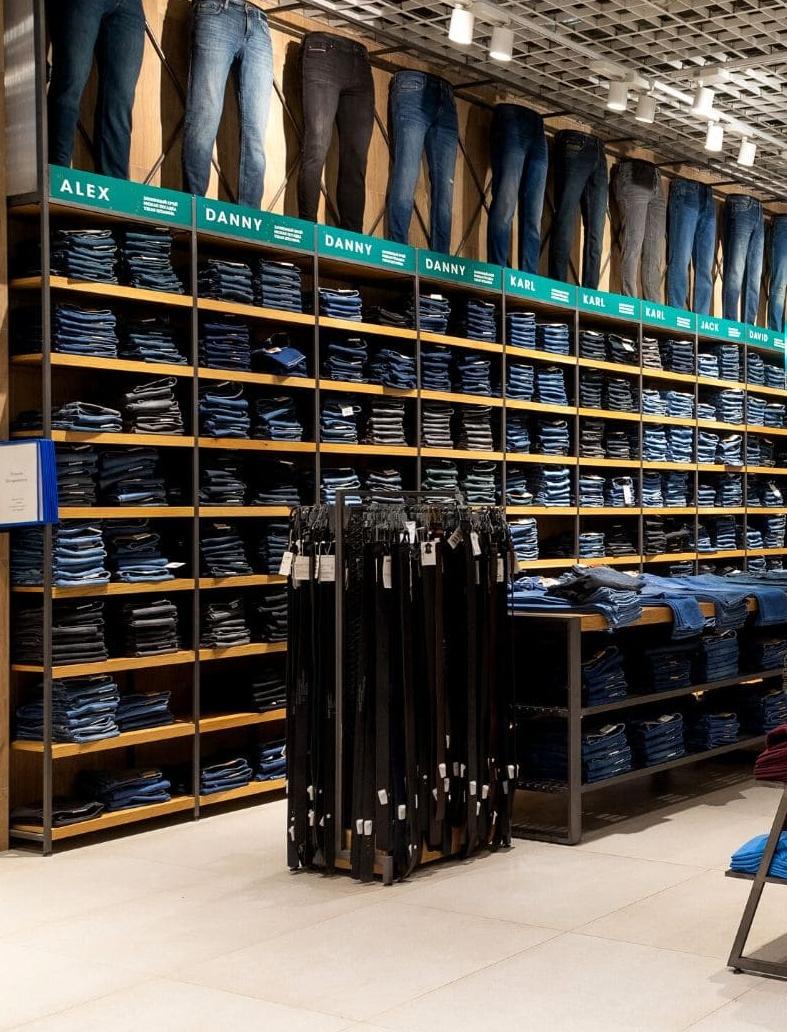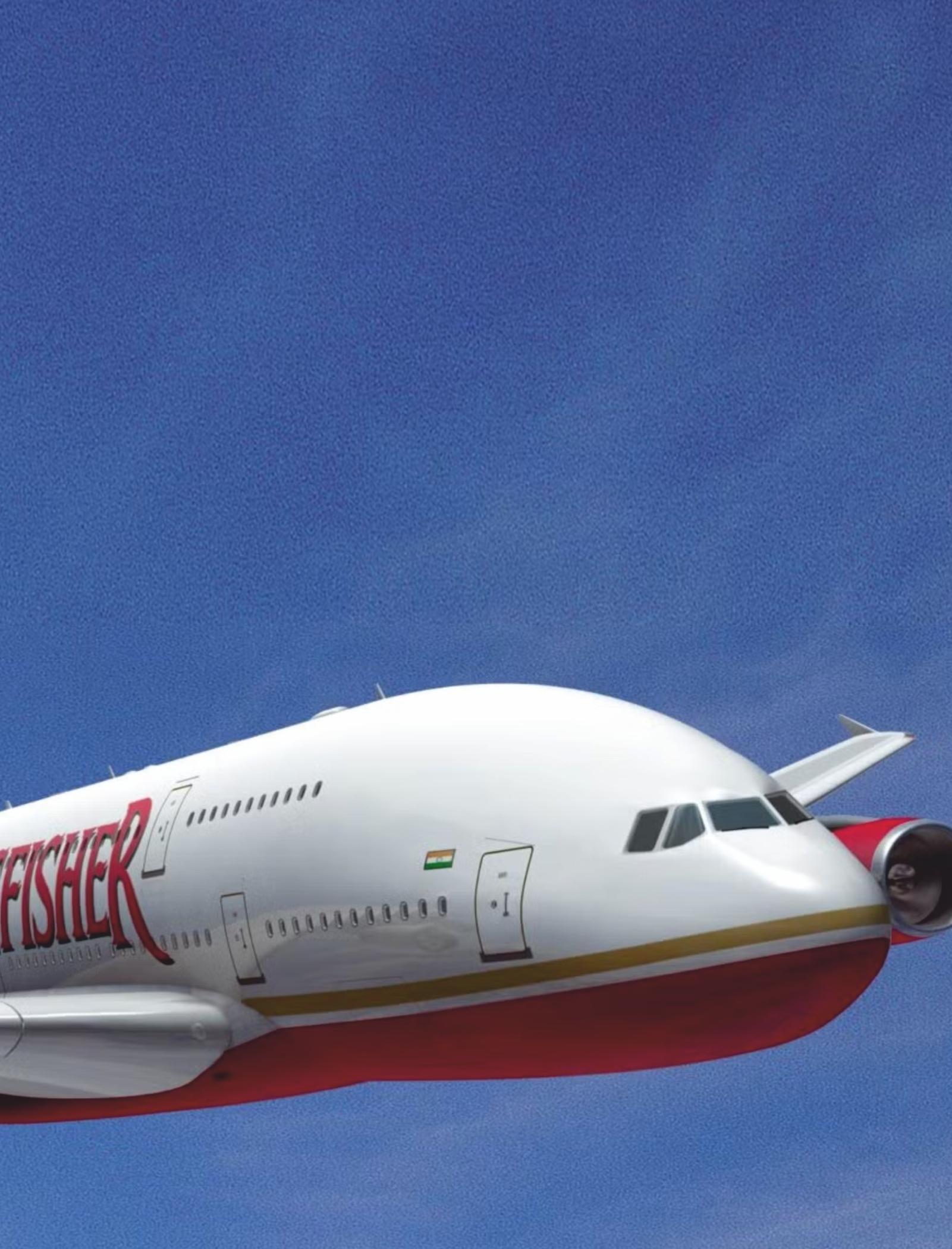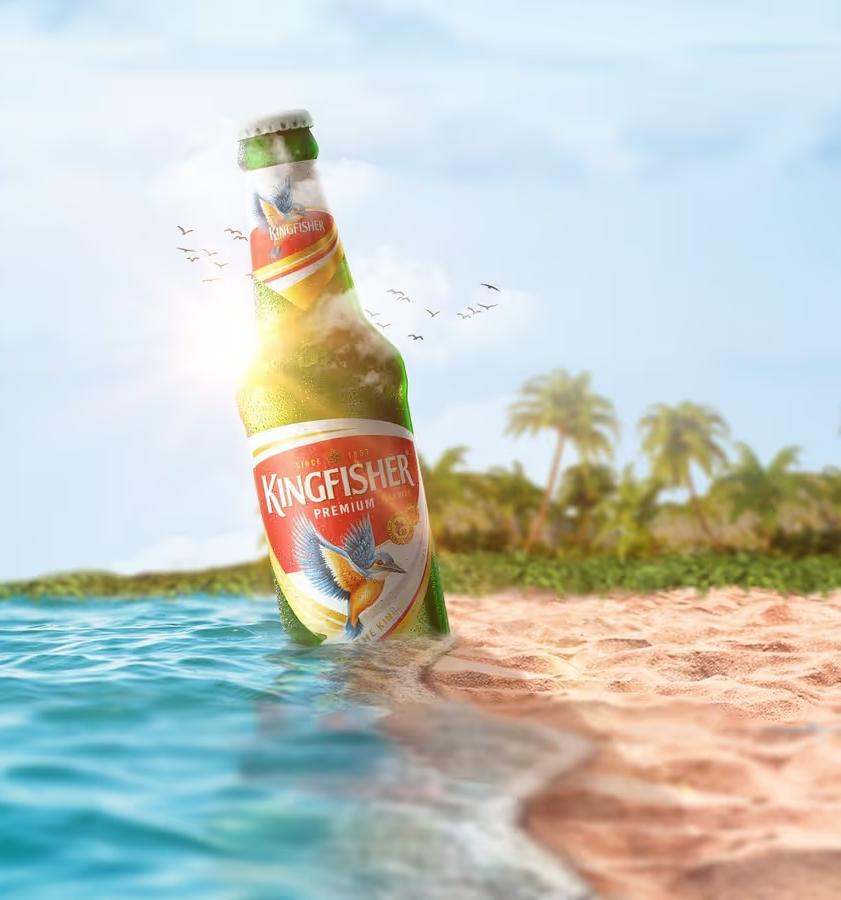From Kingsher Beer to Kingsher Airlines- A Complete Flight of the Brand Upshot
IstanbulThe City of Two Continents Case�Study
The Most
INFLUENTIAL CEOS to Watch in 2024

From Kingsher Beer to Kingsher Airlines- A Complete Flight of the Brand Upshot
IstanbulThe City of Two Continents Case�Study
The Most
INFLUENTIAL CEOS to Watch in 2024



MARKETING COORDINATOR (EMEA)
Peter J.
PR & MARKETING COORDINATOR
James H.
BUSINESS DEVELOPMENT EXECUTIVE
susan B.
CREATIVE CONTENT EDITOR
Shalmali W.
CREATIVE DESIGN HEAD
Sankalp K.
GRAPHIC DESIGNER
Siya S.
SOCIAL MEDIA MANAGER
Narendra S.
DIGITAL CIRCULATION MANAGER
Amanda V.


FarrukhAdeeb, Chairman and Group CEO of XGroup, and Founder of Inveslo (An integral part of XGroup) is a true pioneer in the world of technology and finance. With over two decades of experience, he has successfully navigated the complexities of the modern business landscape, positioning XGroup as a leading force in the industry
Adeeb’s entrepreneurial spirit and unwavering commitment to innovation have driven XGroup to new heights. Under his leadership, the company has established a strong presence in the global market, offering a range of cutting-edge solutions, including advanced online forex trading platforms, prop trading opportunities, and seamless online payment solutions.
What setsAdeeb apart is his ability to foster a culture of innovation and excellence. He empowers his team to think creatively, embrace new technologies, and deliver exceptional results. By investing in talent development and mentorship programs, he ensures that XGroup continues to attract and retain top-tier professionals.
One ofAdeeb’s key strengths is his ability to build strong relationships with clients. He understands that success is built on trust and transparency. By prioritising client needs and delivering tailored solutions, XGroup has earned a reputation for reliability and expertise.
As technology continues to evolve at an unprecedented pace,Adeeb and his team at XGroup remain at the forefront of innovation. They are constantly exploring new opportunities and adapting to changing market dynamics. By embracing emerging technologies such asAI and blockchain, XGroup is poised to shape the future of the industry
FarrukhAdeeb's visionary leadership has not only transformed XGroup but has also inspired countless individuals to pursue their entrepreneurial dreams. His dedication to excellence, innovation, and client satisfaction serves as a model for aspiring leaders around the world.




FarrukhAdeeb, Chairman and Group CEO of XGroup, and Founder of Inveslo (An integral part of XGroup) is not just a business leader; he's a visionary who is reshaping the financial landscape.
Adeeb's entrepreneurial journey began with a bold vision to leverage technology to empower businesses. Under his guidance, XGroup has emerged as a global leader, offering a suite of innovative solutions, including advanced online forex trading platforms, prop trading opportunities, and seamless online payment solutions.
At the heart of XGroup's success liesAdeeb's unwavering commitment to excellence. He fosters a culture of innovation, where team members are encouraged to think creatively and challenge the status quo. By investing in talent development and mentorship programs, he ensures that XGroup remains at the forefront of technological advancements.
Adeeb's client-centric approach has been instrumental in building strong relationships with clients worldwide. XGroup's focus on delivering exceptional service, tailored solutions, and transparent communication has earned the trust of its clients.
As the financial industry continues to evolve,Adeeb and his team at XGroup are well-positioned to capitalize on emerging opportunities. By embracing cutting-edge technologies and adapting to changing market dynamics, XGroup is poised to shape the future of finance.
FarrukhAdeeb's leadership is a testament to the power of vision, innovation, and client-centricity. His impact on the global business landscape is undeniable, and his legacy will continue to inspire future generations of leaders.




Istanbul - The City of Two Continents
40 From Kingsher Beer to Kingsher AirlinesA Complete Flight of the Brand
50 Department Store- Why Are They Still Relevant in the E-commerce World
The Power of Electronic Manufacturing Services in the Modern World




Mastering emerging technologies likeAI, blockchain, and automation has become critical for businesses aiming to stay competitive in an increasingly digital landscape. Reports show that theAI market alone is projected to reach $415 billion by 2027, highlighting rapid growth. Leaders play a crucial role in driving this transformation, offering visionary guidance and fostering innovation, which ensures their organizations adapt, evolve, and thrive in an ever-changing technological environment.
One such leader who exemplifies this transformative vision is FarrukhAdeeb, Chairman and Group CEO of XGroup, and Founder of Inveslo (An integral part of Xgroup). With over 20 years of experience, he has established himself as a highly respected and successful leader. His commitment to innovation and a client-first approach have positioned XGroup as a trusted partner in navigating the complexities of modern business. Through his strategic leadership,Adeeb drives technological advancement and cultivates talent, ensuring that the organization remains at the forefront of industry trends.

The inception of XGroup stemmed from FarrukhAdeeb’s ambitious vision to leverage emerging technologies for business growth. Recognizing the transformative potential of AI and blockchain early on,Adeeb aimed to create a company that would empower businesses to succeed in the digital age. Under his leadership, XGroup and its subsidiaries, such as CapitalXtend and Inveslo, provide advanced online forex trading platforms, while FundX offers opportunities through a prop trading platform, and XPay delivers seamless online payment solutions. Together, these brands help businesses and traders stay ahead in a constantly changing technological landscape.
Staying ahead in technology is challenging, especially in a fast-evolving world. XGroup, underAdeeb’s leadership, balances innovation with consistently high-quality global services. By assembling a skilled team and prioritizing a client-first approach, XGroup has established itself as a trusted partner for businesses worldwide, guiding them through the complexities of the modern business environment.
Adeeb is dedicated to cultivating a clear purpose for his team, driving innovation and excellence within the organization. He is a distinguished business leader known for his strategic vision and exceptional leadership skills. Born in 1981 and based in Cyprus, Adeeb has over 20 years of industry experience, successfully guiding XGroup to impressive achievements.
With an honors degree in Business Management,Adeeb has a deep understanding of the market, which has led him to establish multiple thriving companies, including CapitalXtend and Inveslo. His commitment to innovation and excellence has garnered him numerous accolades, making him a respected figure in the global business community
IN
AND
-FARRUKH
Adeeb takes great pride in his ability to collaborate across diverse cultures and countries, successfully leading global teams and fostering strong relationships with a wide range of clients. His international experience has been rewarding, enabling him to navigate and thrive in a dynamic global environment.
His leadership philosophy emphasizes innovation, integrity, and a client-centric approach.At XGroup, this philosophy is evident in the culture of transparency and continuous learning he nurtures, empowering the team to exceed industry standards. XGroup aims to deliver exceptional IT services while remaining at the forefront of market trends. The leadership has received numerous accolades, including the Best Forex CEO of the Year award and recognition among the Top 10 Leaders, showcasing unwavering commitment to excellence in the trading industry through platforms like CapitalXtend and Inveslo. These honors reflect the team’s collective drive toward achieving transformative success.

FarrukhAdeeb takes a proactive strategy to talent identification and development within XGroup. By promoting a culture of continuous learning and creating opportunities for team members to showcase their skills, he ensures that high-potential individuals are recognized early on.
He places a strong emphasis on mentorship, pairing experienced leaders with emerging talent to foster growth, enhance skills, and share industry knowledge. ForAdeeb, mentorship is vital for driving innovation and maintaining XGroup’s commitment to excellence, ensuring that future leaders are well-equipped to advance the organization.
At XGroup, its approach to enhancing products and services is driven by a strong commitment to innovation and a focus on clients. In a constantly changing tech landscape, it strives not just to keep up but to lead in delivering cutting-edge solutions. Its decision-making
process relies on analyzing market trends, understanding clients’evolving needs, and anticipating future demands. For example, recognizing the growing reliance on eCommerce and digital ecosystems, it expanded its expertise in eCommerce web development to provide seamless, scalable, and secure solutions.Additionally, its dedication to improving Customer Relationship Management (CRM) systems reflects a desire to empower businesses with tools that promote deeper customer engagement and enhance operational efficiency.
XGroup continually explores emerging technologies like Artificial Intelligence, Blockchain, andAutomation to enhance its offerings. Whether developing a website, mobile app, or comprehensive IT service, the aim is to create tailored, robust solutions that exceed client expectations. What sets XGroup apart is its holistic approach: the company collaborates closely with clients to understand their unique challenges, ensuring the solutions provided lead to long-term success. Every strategic decision is designed to add value, for clients and the industries they serve. This philosophy propels the organization forward and keeps it ahead in the ever-evolving technological landscape.
“Leading with integrity ensures that clients thrive through success-driven solutions and a supportive culture.”
Adeeb takes a balanced and forwardthinking method to risk-taking and decision-making. He believes that calculated risks are vital for growth, but they should always be based on thorough analysis and market research. Before making any decision, he carefully considers potential opportunities and possible challenges, ensuring that the benefits outweigh the risks.
To manage potential risks,Adeeb employs a multi-layered strategy. He emphasizes the importance of datadriven insights, encourages open communication across departments, and establishes contingency plans. This method includes diversifying investments, maintaining a strong liquidity position, and continuously monitoring market trends. His proactive strategy helps XGroup navigate uncertainties and enables the company to seize opportunities, fostering sustainable growth and resilience in a dynamic financial landscape.

Adeeb emphasizes the importance of being proactive and having a clear end goal in mind. He believes that focusing on small, incremental steps is crucial for achieving larger objectives.Adeeb acknowledges that the contributions of a diverse network of experts strengthen his leadership journey
He also values communication, striving to articulate a clear vision and involve others in problem-solving. His method promotes a win-win mentality, reflecting his commitment to continuous learning and growth.
Adeeb offers invaluable insights for emerging leaders, emphasizing proactive strategies and collaborative approaches. His guidance highlights the importance of clear communication, continuous learning, and embracing challenges to drive personal and professional growth.

True growth stems from stepping outside one’s comfort zone; overcoming obstacles is vital for achieving ambitions.”



Sprawling across two continents, Europe and Asia, is a city that sits on the Bosphorus Strait and is Turkey’s most populous city and cultural and nancial hub - Istanbul. It is where the East meets the West, antiquity meets modernity and innovative ideas meet age-old traditions. Apart from its popular attractions and historical sites, it also offers an organic creative community, award-winning restaurants, and impressive galleries. In this article, we will learn more about this popular tourist destination, its history, culture & cuisine, and the essential tips for travelers.



Istanbul’s climate is influenced by Mediterranean and oceanic weather patterns and has a transitional climate. This results in warm to hot, moderately dry summers and cool, frequently rainy winters. Mid July to MidAugust experiences the summer season which can be hot and humid. January and February are winter months with occasional snowfalls. Throughout the year, the temperature ranges from 3°C to 29°C. Rainfall is common in the winter season while late spring and early autumn have low precipitation and more comfortable temperatures.
The best time to experience its beauty would be between March to November (spring and autumn seasons). During these months, the weather is typically mild and pleasant, making it ideal for outdoor activities and sightseeing. September and November are said to be lovely months, as the summer crowd has diminished but the weather remains warm enough for outdoor dining and boat trips along the Bosphorus.

Istanbul was historically known as Byzantium and later Constantinople. It has a rich and complex history that spans over thousands of years. The city was originally founded by Greek colonists from Megara around 660 BC, who named it Byzantium after their leader, King Byzas. Its strategic location along the Bosphorus Strait made it an ideal site for trade and military defense. Archaeological evidence suggests that the area was inhabited as early as 3000 BC. Byzantium ourished and became a major trading hub. In 330 AD, Roman Emperor Constantine the Great refounded the city as Constantinople, making it the capital of the Eastern Roman Empire (Byzantine Empire). This period saw the city grow in wealth and cultural signicance, becoming a center for Christianity.
The city remained a pivotal center until it was conquered by the Ottoman Empire in 1453 under Sultan Mehmed II. This marked the end of the Byzantine Empire and the beginning of a new era, which became the capital of the Ottoman Empire. The Ottomans transformed the city, adding magnicent structures such as the Hagia Sophia and the Topkapi Palace, and it became a melting pot of cultures. The city continued to thrive until the collapse of the Ottoman Empire in 1922. In the following year in 1923, it was ofcially renamed Istanbul and became a part of the Republic of Turkey. Today, it is Turkey's largest city and a vital cultural and economic center.



Being the most populous city in Turkey, it houses people from different backgrounds, creating a space where different religions can coexist. The majority of its residents practice Islam while in minority religions, Christianity has the largest presence. Other religions like Jewish, Hinduism, and Buddhism contribute to the cultural mix.
The city is a melting pot of nationalities, with nearly 200,000 foreigners from over 60 different countries calling the city home. This mix of cultures leads to a rich exchange of ideas and traditions. People of various faiths often engage in each other's cultural celebrations. There are many significant religious sites to visit to explore its culture.
• Bosphorus
Istanbul’s Bosphorus boat tours are a popular activity for tourists who want to experience the city’s rich culture. It offers a great opportunity to see important landmarks that represent the city’s rich history and heritage. You can view some of the famous sites like Rumeli Hisarı,Anadolu Hisarı, Büyük Mecidiye Mosque, Küçüksu Pavilion, and Beylerbeyi Mosque.
• Topkapi Palace
The construction of Topkapi Palace began in 1460 and was completed in 1478 after the city was conquered. For 400 years, it served as the center of education, administration, and the arts in the Ottoman Empire. In 1985, UNESCO added Topkapı Palace to its World Heritage List.

• IstanbulArchaeology Museum
TheArchaeology Museum, which is managed by the Turkish Ministry of Culture and Tourism, is located in the Sultanahmet district. It is considered one of the top ten museums in the world and is designed specifically for showcasing its collections. Visitors can see beautiful artifacts that span from Mesopotamia toAnatolia, making it a must-visit destination for anyone interested in history.
• Grand Bazaar
It is the oldest and largest shopping center, having a history of over 500 years. For centuries, it has served both the people of Istanbul and tourists. If you're visiting for cultural experiences, you'll find many items that reflect the city’s culture here. It features a wide variety of shops, like jewelers, gift shops, and many more.
• The Blue Mosque
The Blue Mosque, located directly across from Hagia Sophia, is a popular destination for many visitors. It is one of the most significant buildings in Istanbul. It was constructed by Ottoman SultanAhmet I between 1609 and 1616 and is a great example of classic Turkish architecture & is the first mosque to be built with six minarets.
• Hagia Sophia
The Hagia Sophia Museum is very important to both the Christian and Muslim worlds. It was built for the third time by Emperor Justinian between 532 and 537. For 1,000 years, it was the largest cathedral in the world.After Istanbul was conquered in 1453, it was converted into a mosque. In 1935, it became a museum.
Its rich history and its diverse culture have a big influence on its cuisine. The city’s food scene reflects its Ottoman heritage and the myriad cultures that have passed through its gates over centuries.
Turkish cuisine is renowned for its diversity, showcasing a variety of dishes that range from hearty meals to exquisite desserts. In Istanbul, you can find traditional Turkish dishes and influences from Mediterranean, Balkan, Middle Eastern, CentralAsian, and Eastern European cuisines. Here are some dishes you must try
• Kebabs:Astaple of Turkish cuisine, kebabs come in various forms, including shish (skewered) and döner (rotating meat).
• Lahmacun: Often referred to as Turkish pizza, this thin flatbread is topped with minced meat, vegetables, and spices.
• Meze: Aselection of small dishes served as appetizers, meze can include items like hummus, stuffed grape leaves (yaprak sarma), and various dips.
• Baklava: Asweet pastry made of layers of filo dough filled with nuts and sweetened with honey or syrup, baklava is a must-try dessert.


Istanbul is a city lled with numerous bucket-list-worthy places. Choosing a place to stay will depend on your preferences, whether you want to enjoy historic sites or indulge in cultural fests, and your budget. Here are some of the recommended places for you to choose from.
Galata in the Beyoglu District: Galata is a great area for rst-time visitors. It has nice cafes, pretty cobblestone streets, and beautiful old buildings. It’s very close to Istiklal Street and easy to reach by metro or tram, making it simple to travel anywhere.
Fener & Balat in Fatih District: The colorful houses in Fener and Balat make this area a must-visit. It's also a wonderful place to stay. You'll nd unique cafes and restaurants, and you can experience local life without the big crowds. Many buses and ferries, including ones to Üsküdar on the Asian side, connect this area to the rest of Istanbul.
Osmanbey/Kurtuluş in Şişli District: It's very well connected to public transport, with the metro and buses nearby. Taksim Square is just one stop away from the metro, and you can reach the historic area of Sultanahmet in about 30 minutes by metro and tram. There are also many great places to eat, along with cute cafes, bars, and taverns. Plus, the trendy neighborhoods of Nişantaşı and Beşiktaş are close by.



Before you go to Istanbul, check the visa rules for your country. Many travelers can get an e-Visa online, which is easy and quick. Just make sure to verify the latest requirements before your trip.
The official currency is the Turkish Lira (TRY). Credit cards are accepted in many places, but having some cash for small shops, markets, or traditional areas is a good idea.
Turkish is the main language, but many people in tourist areas speak English. Learning a few simple Turkish phrases can make your visit more enjoyable and is often appreciated by locals.
It is a modern city, but it's important to dress respectfully, especially when visiting religious sites like mosques. It's recommended to wear modest clothing, and women should bring a scarf to cover their heads when entering mosques.
It has a great public transport system, including trams, buses, ferries, and the metro. Get an Istanbulkart, a reloadable card that works on all public transport, to make traveling easier and cheaper
Tipping is common. In restaurants, leaving 10-15% of the bill is typical. For small services like taxi rides or at hotels, rounding up the bill or giving small change is appreciated.

Istanbul sees the mix of European and Asian cultures and is the heart of Turkey. With several historical and cultural sites to explore, along with beaches and great cafes and restaurants, it can be a perfect spot for your next vacation or weekend getaway.



Online shopping is the go-to mantra for people in today’s digital world, but this boon in technology has raised the question whether department stores are still relevant in today's time. Yet, these large stores have found a way to adapt and succeed despite the competition from online shopping. Imagine walking into a lively store that offers everything you need, from everyday household products to fashionable trendy clothes, all in one place. In this blog, we will learn more about the departmental store, its history, types, features, and challenges it faces in this digital age.


Adepartment store is a type of retail shop that sells a variety of products, all organized into different sections called departments, with each department focusing on a specific type of product. It offers a wide variety of goods and services to appeal to many types of shoppers. These stores became popular in major cities during the mid19th century and changed the way people shop, as well as how they view service and luxury
In the US, it is common for departmental stores to have ‘everything under one roof,’from small items to large types of furniture. Some well-known departmental stores in the US are Walmart, Target, and Macy’s.
Today, departmental stores offer all kinds of products, even food and books. In discount department stores, customers usually pay at the front of the store, while more upscale stores have sales counters in each department. Some are part of larger retail chains, while others operate independently. Since the 1980s, these stores have faced tough competition from discount retailers and, even more so since the 2000s, from online shopping sites.
The history of department stores dates back to the mid-19th century. One of the earliest examples of these stores is Bennett's in Derby, which showcased many of the features we associate with departmental stores today. The term "departmental store" itself emerged in the mid-1880s, coinciding with advancements in mass transportation, such as trolleys, which made it easier for customers to visit these large retail spaces.
During this time, these stores started to adopt a more organized layout, offering a wide variety of goods under one roof. This concept allowed shoppers to find everything they needed in one place, from clothing to household items. Some of the wellknown stores, like Marshall Field's in Chicago and John Wanamaker's in Philadelphia, competed for the title of the most prestigious departmental store inAmerica.
Over the years, these stores became cultural landmarks, especially in urban areas.Apart from shopping, these stores also served as social hubs where people gathered. The design and atmosphere of these stores kept growing to meet the needs of the consumers.
A departmental store offers several features, some are listed below.
Modern departmental stores offer many services and aim to provide excellent service to consumers.
These stores are usually found in the center of a city, making it easy for many people to visit.
Because they are large, these stores are often set up as companies run by a board of directors. A managing director oversees everything, with help from a general manager and department heads.
Departmental stores buy products directly from manufacturers and have their own warehouses. This helps cut out unnecessary middlemen between the producers and customers.
A central purchasing department makes all buying decisions, while sales happen in different store sections.
Departmental stores are convenient for consumers but they come in various types. Here are some of the main types.
These are retail chains that sell products at lower prices than regular stores. They offer a wide variety of items and provide discounts for buying in bulk. Some examples are Target and Walmart.
These stores are usually owned by a brand or a group of brands. Here, customers can find discounted products because they buy directly from the manufacturer. These stores often sell items that are out of season or overstocked. Some examples are TJ Maxx, Marshalls, Burlington, and Ross Dress.
Outlet stores are smaller shops owned by a single brand. They focus only on that brand’s products and usually have a larger selection of those items than regular stores. For example, a Nike outlet will have more Nike products than a typical store that also sells Nike. Customers can often find additional discounts here.Another example is anAdidas Outlet.
Junior departmental stores are smaller stores that sell high-priced items not found in regular shops. Each section of the store runs independently with its own checkout, but the whole store is still managed by one company. Examples of this store type are Bloomingdale’s and Nordstrom.
Category-specific stores focus on one type of product, like clothing, beauty items, electronics, or books. For example, Toys "R" Us is a store that specializes in toys and children's products. These stores carry a wide range of items in their category, like groceries or baby supplies, but don’t sell anything outside of that category
Warehouse stores are some of the largest stores and also serve as storage for various brands. They sell products in bulk and often require a membership to shop there. Costco Wholesale and Sam’s Club is a wellknown example of a warehouse store.


• Departmental stores are usually located in busy areas, which helps them draw in a lot of customers, especially during peak shopping times.
• By offering a wide variety of products all in one place, departmental stores make it convenient for customers to nd everything they need without having to go to multiple stores.
• Department stores aim to provide excellent services to their customers. This includes home delivery, taking phone orders, offering credit options, and providing facilities like restrooms, phone booths, restaurants, and salons.
• Departmental stores can invest a lot in advertising and promotions, which helps them boost their sales and attract more customers.

• Because department stores are so large, it's hard for staff to give individual attention to each customer.
• These stores spend a lot of money on services, which makes their operating costs high. This can lead to higher prices for products,

• making them less affordable for people with lower incomes.
• With high costs and large inventories, department stores can face signicant losses. For instance, if customer preferences change or fashions go out of style, they may have to sell outdated items at a discount to clear out stock.
• While department stores are often in busy areas, this can make them less convenient for quick purchases or for people who prefer to shop at nearby smaller stores.
Despite the rise of e-commerce, department stores are still thriving in the retail sector. Their ability to offer a wide variety of products, coupled with exceptional customer service, makes them a desirable shopping destination for many consumers. In the future, departmental stores that embrace sustainability and technology will have higher chances to survive among their competitors.




Abird darting across the sky as its iridescent plumage catches the sunlight. This is the kingfisher - a symbol of speed and grace. But what if this bird were to leave its natural habitat and venture into a world far from its aquatic domain?
Such is the tale of Kingfisher, the brand. Like its avian namesake, the bird is associated with speed and elegance. Born in the heart of India, this brand quickly soared to national prominence. Yet, much like the bird’s daring flight, Kingfisher’s journey was not without challenges.
This case study delves into the brand’s evolution – Kingfisher Beer to KingfisherAirlines, exploring how its turbulent waters of the market and financial storms ultimately carved out a niche for itself.
Can a brand, like a bird, truly soar to new heights without ever returning to its roots? Let’s dive into the Kingfisher saga and discover the secrets behind its enduring appeal.

In the year 1857, a brewing revolution was brewing. Five of India’s most esteemed breweries were united under the banner of United Breweries to create a beer captivating the nation’s palate. Inspired by the classic European pilsner, they sought to craft a beverage that was flavorful and refreshing, perfect for the humid Indian climate.

After months of experimentation and refinement, they struck gold. The resulting beer was a thing of beauty, a harmonious blend of malt, hops, and yeast that tantalized the taste buds. This masterpiece, named Kingfisher beer, quickly gained popularity and became synonymous with quality and enjoyment.
Over a century and a half later, Kingfisher’s legacy endures. It remains India’s most beloved lager, a testament to its timeless appeal. The secret to its enduring success lies in the original recipe, a carefully guarded treasure passed down through generations.
In the 1980s, Kingfisher’s fame began to spread beyond the shores of India. It made its triumphant debut in the United Kingdom and quickly won the hearts of discerning drinkers. From the vibrant bars of Indian restaurants to the bustling sports clubs and premium pubs, Kingfisher’s presence became a familiar sight.
Today, Kingfisher continues to captivate audiences worldwide, attracting new fans with its exceptional taste and enduring quality As the legend of Kingfisher grows, so too does its reputation as an iconic beer and a symbol of India’s rich brewing heritage.

Launched in 2005 by the flamboyant businessman Vijay Mallya, KingfisherAirlines quickly established itself as India’s premier airline. With its luxurious interiors and a fleet of modern aircraft, Kingfisher offered a level of sophistication that was unmatched in the Indian aviation market. The airline positioned itself as a symbol of status and indulgence, catering to discerning travelers who sought a premium experience.
Kingfisher’s expansion was meteoric. It rapidly grew to become the second-largest airline in India, offering domestic and international flights to a wide range of destinations. The airline’s ambitious plans included acquiringAir Deccan, a low-cost carrier, and expanding its international network to include destinations in Europe and NorthAmerica.

Despite its initial success, KingfisherAirlines began to face headwinds. High operational costs, coupled with intense competition in India’s price-sensitive airline market, put a strain on the airline’s finances. The global financial crisis of 2008 further exacerbated these challenges.
As the airline’s financial troubles mounted, KingfisherAirlines was forced to ground its fleet in 2012. The collapse of the airline had far-reaching consequences, not only for its employees and passengers but also for the broader Indian aviation industry The airline’s demise left a void in the market for premium air travel, and its failure had a significant impact on the reputation of Indian aviation.
The collapse of KingfisherAirlines also had personal ramifications for Vijay Mallya. The airline’s debts contributed to the financial troubles of his UB Group, and Mallya was subsequently accused of financial fraud and money laundering. He fled India in 2016 and has since been living in the United Kingdom while facing extradition proceedings.
KingfisherAirlines’story is a cautionary tale about the perils of unchecked growth and the importance of sound financial management. Despite its initial success, the airline’s downfall highlights the challenges of operating in a highly competitive and volatile industry.

Kingfisher: Beyond the Beer
The collapse of KingfisherAirlines also had personal ramifications for Vijay Mallya. The airline’s debts contributed to the financial troubles of his UB Group, and Mallya was subsequently accused of financial fraud and money laundering. He fled India in 2016 and has since been living in the United Kingdom while facing extradition proceedings.
KingfisherAirlines’story is a cautionary tale about the perils of unchecked growth and the importance of sound financial management. Despite its initial success, the airline’s downfall highlights the challenges of operating in a highly competitive and volatile industry.
Ÿ The Mallya Era
Vijay Mallya, the charismatic entrepreneur often dubbed the “King of Good Times,” was the face of Kingfisher for many years. His flamboyant lifestyle, with his ownership of the Force India Formula One team and the highly popular Kingfisher Calendar, helped to cement Kingfisher’s image as a brand associated with luxury and indulgence.
Ÿ The Kingfisher Calendar:ACultural Icon
Launched in 2003, the Kingfisher Calendar became a cultural phenomenon in India. This calendar featured stunning models in exotic locations and served as a powerful branding tool, reinforcing the “good times” image that Kingfisher had cultivated.
Ÿ Surviving the Storm
Despite the downfall of KingfisherAirlines and the legal troubles faced by Vijay Mallya, the Kingfisher beer brand has remained resilient. United Breweries continued to be a key player in India’s alcoholic beverage market.
Ÿ ANew Chapter
In recent years, Heineken, the global brewing giant, has increased its stake in United Breweries.As of 2021, Heineken controls the majority of the company, marking a significant shift in the brand’s ownership structure. This partnership has provided Kingfisher with access to Heineken’s global resources and expertise, further strengthening its position in the Indian market.
Ÿ ATimeless Classic
Despite the challenges and changes, Kingfisher beer remains a beloved brand among Indian consumers. Its enduring popularity is a testament to its quality, taste, and brand identity that it has built over the years.As Kingfisher continues to evolve, it remains a symbol of India’s vibrant brewing culture and a testament to the enduring power of a well-loved brand.

Kingfisher, under United Breweries, dominates the Indian beer market with an impressive market share of 55%. The brand holds a significant lead over competitors like Carlsberg (20%) andAB InBev (15%), positioning itself as a cultural and economic powerhouse in the country’s beverage industry. Here’s a breakdown of its competitive position and strategic insights.
55.0% United Breweries ( Kingfisher )


Brand Loyalty:
Kingfisher’s legacy as one of India’s most recognizable beer brands has allowed it to capture and retain a loyal customer base. With over three decades in the market, Kingfisher has become synonymous with quality beer for Indian consumers, both at home and abroad.
Diverse Product Range:
Kingfisher has expanded its product portfolio beyond its flagship “Kingfisher Premium” and “Kingfisher Strong” brands to cater to evolving consumer preferences. They’ve tapped into the growing demand for light, low-calorie beers, and craft options, ensuring the brand’s relevance across different market segments.
Market Leadership:
As the pie chart illustrates, Kingfisher holds more than half of the market share. This dominance reflects its widespread distribution network, from local taverns to premium hotels, along with its strong branding and marketing efforts.
StrategicAlliances:
Kingfisher’s partnership with global beer brands through United Breweries gives it access to international brewing techniques and allows it to maintain its innovative edge. This has helped the brand continue to evolve in response to global trends.
International Presence:
Kingfisher exports to over 50 countries, reinforcing its global appeal as an ambassador for Indian culture. Its presence in international markets also boosts brand visibility and establishes it as a global player.
Kingfisher’s enduring success can be attributed to a combination of strategic initiatives. The brand has built a robust distribution network, ensuring its products are readily available across India’s vast and diverse landscape. By focusing on youth-centric marketing strategies, Kingfisher Beer has managed to stay relevant to the growing younger population. The introduction of premium variants like Kingfisher Ultra has allowed the brand to tap into the aspirational mindset of India’s rising middle class.
Recognizing the changing tastes of consumers, Kingfisher has also diversified its product portfolio with new flavors and variants, including lighter beers that cater to health-conscious drinkers. Finally, the brand’s commitment to sustainability initiatives, such as investing in eco-friendly packaging and reducing water usage, aligns with global trends and demonstrates its long-term vision.
Kingfisher’s combination of market leadership, innovation, and strategic positioning has cemented its place as the go-to beer brand in India. With its eye on domestic and international growth, it continues to shape the future of the beverage industry




Innovation surrounds us everywhere in today’s technological world, from your smartphone in your pocket to the smart fridge in your kitchen. Hardly a part of human life has been without them. However, for every electronic device, there is a longer process of designing, assembling, and testing beforehand. This is where electronic manufacturing services come in. In other words, the EMS is the back-end people of the electronics industry who help enterprises bring their ideas together in an efcient and economically viable way.
The signicance of electronic manufacturing services, how they benet the different industries, and what to consider during the selection of the EMS partner will be discussed herein in the blog.
Electronic manufacturing services are companies that design, manufacture, and test electronic parts or devices for other businesses. This can range from prototyping and high-volume production to supply chain management and assembly, including aftermarket services like repair and warranty management.
Whether it’s a small startup or an enterprise, many companies in the tech world rely on EMS providers to handle the manufacturing side of their products. Why is that? Simply put, the manufacturing of electronics is a highly specialized art. It takes great expertise, advanced equipment, and a major investment of resources. Most rms cannot justify internally setting up this often expensive part of the process but can simply outsource it to experts who can do everything from start to nish.
When it comes to an EMS provider for electronic manufacturing services, there is a long list of benets. Following are some of the reasons for which businesses, irrespective of the sector in which they deal, outsource electronic production:
EMS providers own the infrastructure, reducing costs compared to in-house production.
Lean processes allow EMS providers to speed up production and bring products to market faster
EMS firms offer access to skilled engineers and technicians, eliminating the need for additional hires.
EMS providers ensure high quality with rigorous quality control from design to final testing
EMS providers can scale production up or down, allowing flexibility without extra investment in equipment or labor
EMS providers manage sourcing, suppliers, and inventory, ensuring continuous production and reducing logistical challenges.
Applications of electronic manufacturing services are spread over industries, each with its needs and challenges. Let’s take a look at some of the key industries dependent on EMS providers:
Ÿ Consumer Electronics: Consumer electronics come in handy, from smartphones right to the laptop one uses to prepare this document. With improvements in EMS providers, companies can help businesses in getting these devices to today’s increasingly sophisticated consumers rather efficiently and cost-effectively
Ÿ Medical Devices: The two most important features of medical devices are preciseness and reliability. In such industries, the EMS providers have to follow some strict regulations to make sure that every product is safe and functional. Starting from diagnostic tools, electronic manufacturing services provide their support with wearable health monitors.
Ÿ Automotive: The automotive sector, too, has increasingly required electronic components from advanced driver-assistance systems to batteries for electric vehicles. The production of such components heavily relies on EMS providers, for it enables car manufacturers to remain updated with fast-paced innovations.
Ÿ Aerospace and Defense: Aerospace and defense industries require complex and highly specialized electronic components that need to
meet the highest standards of quality and reliability. Electronic manufacturing service providers are experienced in handling sensitive materials and producing components that have to function in extreme conditions.
Ÿ Telecommunications: The industry of telecommunications depends on the manufacturing services of electronics for making everything, from smartphones to network infrastructure. With the continued rollout of 5G technology across different parts of the world, the requirement for telecommunication equipment will see an upward spiral, and thus EMS providers will become indispensable for this industry
The right electronic manufacturing services partner can mean success or failure for a product. There are quite a few to pick from, so some factors to look at when considering this choice will include:
The right electronic manufacturing services partner can mean success or failure for a product. There are quite a few to pick from, so some factors to look at when considering this choice will include:
This Company should have a good history in your particular industry.An experienced company is far better equipped to deal with specific challenges or regulations that may be associated with a product.
Ensure the EMS supplier has the necessary equipment and resources to handle your product. Whether it be small batch production or volume manufacturing, your EMS partner should be able to handle your product requirements.
Quality Control: The most crucial factor in electronics is quality. Ensure the respective EMS provider utilizes the proper quality control methods. These can range from ISO 9001 to IPC-A-610 accreditation.
Communication and collaboration: Agood partnership is all about good communication and collaboration in the right measure. Optimize an EMS provider that can respond to your needs in a considerate manner and be transparent all through the period of production.
Cost and Timeline: While the cost should not be solely a determining factor, find an EMS provider that is competitively priced without compromising on quality. Similarly, consider production timelines to make sure they can meet the deadlines of your projects.
Electronic manufacturing services form the backbone of the electronics industry, serving businesses both big and small in manifold ways. Be it a startup to bring its new product into the market or an already-established business to scale into volume production, everything will be done perfectly if you happen to partner with the right EMS provider. From cost savings to faster time to market, electronic manufacturing services confer a whole host of benets that will help businesses take the edge in today’s fastpaced world.

By understanding the role of the EMS provider and carefully choosing the right partner, companies can ensure their electronic products are manufactured efciently, cost-effectively, and to the highest possible standards of quality.



